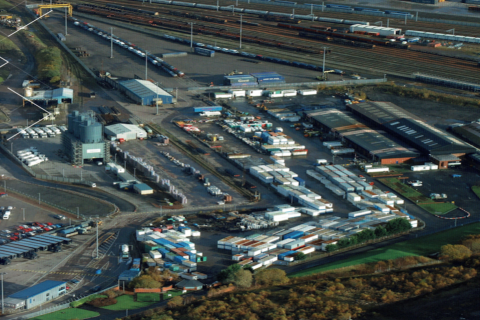China-Lithuania geopolitics hinder rail developments

The cease of rail freight operations between Lithuania and China has been on the headlines for days. The two sides contradict each other about the current state of their affairs, and the situation is still unclear. Yet, some companies already face issues resulting from political instability.
GVT Group of Logistics is one of them. The Dutch transport and logistics firm recently launched a direct train between Tilburg in the Netherlands and the Kaunas Intermodal Terminal (KIT) in Lithuania. The new service is significant because it puts KIT on the map of European intermodal terminals. Additionally, it was supposed to have another function: using Lithuania and Kaunas as GVT’s transit hub on the way to China. However, As Roland Verbraak, general manager at GVT, explained, this will not happen any time soon.
Plans postponed
Verbraak explained the situation during the RailFreight Live broadcast of 27 August. As he underlined, he is no political expert, but everyone has seen what is going on between the two countries lately. The domino of political developments and the Chinese Railway’s threats to pause rail freight traffic to and from Lithuania were clear.
What was not clear is whether this intention was already implemented. None of the two sides has provided a clear overview of what is going on. Nevertheless, GVT’s plans to use Lithuania as a New Silk Road gateway are postponed. Verbraak underlined that GVT hopes to be able to launch a gateway corridor between Kaunas and China soon. The Dutch firm had solid expansion plans through the Baltic country. However, the geopolitical situation makes things way more complicated than before.
As a result, plans for Lithuania are getting in the drawer for now. Verbraak mentioned that they do no abandon their goals permanently. They are just waiting for stability to return before proceeding with further expansion via Kaunas Intermodal Terminal.
You can learn more by watching the video below:
Kaunas Intermodal Terminal
What’s more, in the show apart from Roland Verbraak, we also welcomed Egidijus Lazauskas, the CEO of LTG Cargo. As he narrated, the Kaunas Intermodal Terminal will play a crucial role in Baltic and European rail freight. Its capacity is estimated at around 55,000 TEUs per year, while its position will benefit further connections to the north (Finland, for instance) and the east towards Russia and China.
The terminal will operate in standard and broad gauge, meaning that it will be an ideal transhipment hub for eastbound trains via Russia. Most importantly, though, it will ramp up rail freight operations through Lithuania. As Lazauskas highlighted, LTG Cargo has lost quite a few volumes because of the political situation with Belarus. According to him, the operation of KIT and the new cargo flows it will bring will more or less balance the loss of bulk volumes from the neighbouring country.
Also read:
- Is the China-Europe Express becoming a political weapon in the hands of China?
- Contradiction over China-Lithuania trains
You just read one of our premium articles free of charge
Want full access? Take advantage of our exclusive offer





